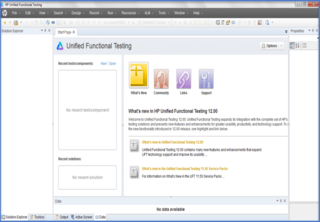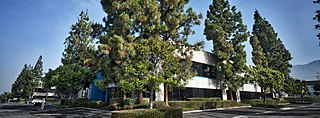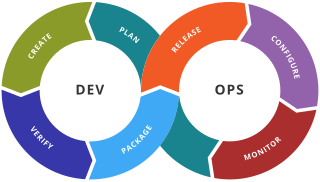
Configuration management (CM) is a systems engineering process for establishing and maintaining consistency of a product's performance, functional, and physical attributes with its requirements, design, and operational information throughout its life. The CM process is widely used by military engineering organizations to manage changes throughout the system lifecycle of complex systems, such as weapon systems, military vehicles, and information systems. Outside the military, the CM process is also used with IT service management as defined by ITIL, and with other domain models in the civil engineering and other industrial engineering segments such as roads, bridges, canals, dams, and buildings.
TeamForge is a proprietary collaborative application lifecycle management forge supporting version control and a software development management system.
MKS, Inc is a subsidiary of PTC, Inc. It was previously a multinational independent software vendor that was acquired by Parametric Technology Corporation on May 31, 2011. MKS operated in the Application Lifecycle Management (ALM) and Systems Administration market segments.

Mercury Interactive Corporation was an Israeli company acquired by the HP Software Division. Mercury offered software for application management, application delivery, change and configuration management, service-oriented architecture, change request, quality assurance, and IT governance.
A service delivery platform (SDP) is a set of components that provides a service(s) delivery architecture for a type of service delivered to consumer, whether it be a customer or other system. Although it is commonly used in the context of telecommunications, it can apply to any system that provides a service. Although the TM Forum (TMF) is working on defining specifications in this area, there is no standard definition of SDP in industry and different players define its components, breadth, and depth in slightly different ways.
Application lifecycle management (ALM) is the product lifecycle management of computer programs. It encompasses requirements management, software architecture, computer programming, software testing, software maintenance, change management, continuous integration, project management, and release management.
Aldon is a business unit of Rocket Software. It develops, manufactures, licenses and supports software change management products for the enterprise application lifecycle management (ALM) and software change management (SCM) markets.

OpenText UFT One, formerly known as Micro Focus Unified Functional Testing and QuickTest Professional (QTP), is software that provides functional and regression test automation for software applications and environments.
AnthillPro is a software tool originally developed and released as one of the first continuous integration servers. AnthillPro automates the process of building code into software projects and testing it to verify that project quality has been maintained. Software developers are able to identify bugs and errors earlier by using AnthillPro to track, collate, and test changes in real time to a collectively maintained body of computer code.
OpenText Quality Center, formerly known as Micro Focus Quality Center and HP Quality Center, is a quality management software offered by OpenText who acquired Micro Focus in 2023. Micro Focus acquired the software division of Hewlett Packard Enterprise in 2017, with many capabilities acquired from Mercury Interactive Corporation. Quality Center offers software quality assurance, including requirements management, test management and business process testing for IT and application environments. Quality Center is a component of the Micro Focus Application Lifecycle Management software set.

Parasoft is an independent software vendor specializing in automated software testing and application security with headquarters in Monrovia, California. It was founded in 1987 by four graduates of the California Institute of Technology who planned to commercialize the parallel computing software tools they had been working on for the Caltech Cosmic Cube, which was the first working hypercube computer built.
RTTS is a professional services organization that provides software quality outsourcing, training, and resources for business applications. With offices in New York City, Philadelphia, Atlanta, and Phoenix, RTTS serves mid-sized to large corporations throughout North America. RTTS uses the software quality and test solutions from IBM, Hewlett Packard Enterprise, Microsoft and other vendors and open source tools to perform software performance testing, functional test automation, big data testing, data warehouse/ETL testing, mobile application testing, security testing and service virtualization.
Pulse is now Secure Delivery Center 2014, a proprietary application lifecycle management (ALM) technology developed and maintained by Genuitec, a founding and strategic member of the Eclipse Foundation.
Development testing is a software development process that involves synchronized application of a broad spectrum of defect prevention and detection strategies in order to reduce software development risks, time, and costs.
Helix ALM, formerly called TestTrack, is application lifecycle management (ALM) software developed by Perforce. The software allows developers to manage requirements, defects, issues and testing during software development.
Perforce Software, Inc. is an American developer of software used for developing and running applications, including version control software, web-based repository management, developer collaboration, application lifecycle management, web application servers, debugging tools and agile planning software.

A DevOps toolchain is a set or combination of tools that aid in the delivery, development, and management of software applications throughout the systems development life cycle, as coordinated by an organisation that uses DevOps practices.

Tricentis is a software testing company founded in 2007 and headquartered in Austin, Texas. It provides software testing automation and software quality assurance products for enterprise software.





